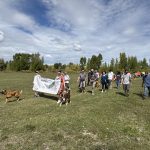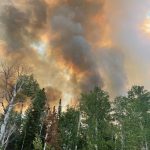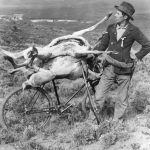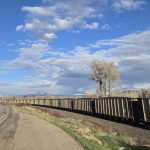Archery, muzzleloader big game seasons show rebound in herds, rifle hunters poised for solid season

Wayne Lewis/Courtesy photo
Colorado’s early big game seasons are showing signs of recovery, and wildlife officers are cautiously optimistic as they watch herds grow and harvest statistics climb.
Jared Lamb, Colorado Parks and Wildlife District Wildlife Manager for the Craig North District, said archery and muzzleloader hunters for elk, deer, pronghorn and bear saw increased opportunity and animal quality this year following the brutal winter that hammered northwest Colorado two years ago.
Lamb covers a large portion of Routt and Moffat Counties, including the western portion of Game Management Unit 5, all of Unit 4 and the eastern portion of Unit 3. He has a wildlife biology degree from Colorado State University and came to Craig in 2023, a move that fulfilled his “lifelong dream to be a game warden.”
His first hunting season in the area, however, came on the heels of the die-off winter of 2022-2023.
“It was pretty slim pickings out there,” Lamb said of the following hunting seasons. “There were a lot of spikes and very few legal bulls.”
He noted the winter hit older age classes of elk hard, and delayed the pipeline of bulls coming up from the 2023 calf crop.
“We estimate we lost close to half of our elk population after that severe winter,” said Mike Swaro, assistant area wildlife manager for Colorado Parks and Wildlife, based out of Meeker.
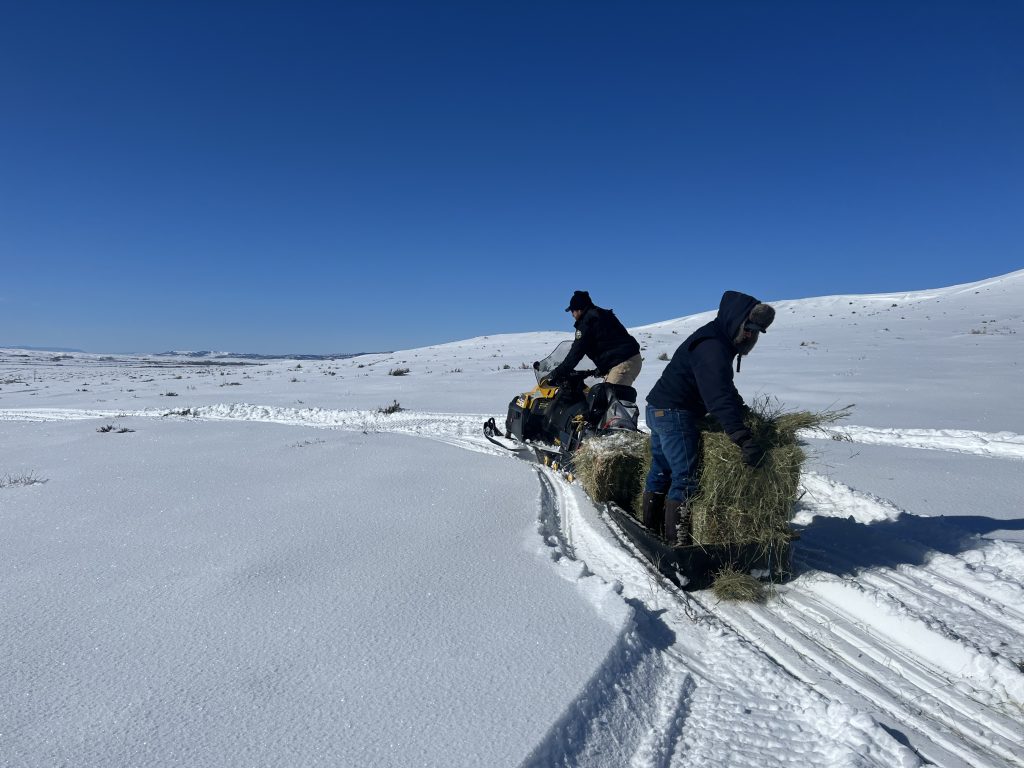
This September looks different and is leading to optimism for both CPW officials and hunters alike.
Muzzleloader season closed Sept. 23 and archery on Sept. 30. Lamb said reports from muzzleloader season, which overlaps with archery, featured “lots of bugling, even throughout the day,” which led to a “pretty decent harvest.”
Calling began to taper off after muzzleloader season.
As a result, Lamb thinks things are pointing in a great direction for rifle season.
Elk checks have featured many raghorn four-by-fours and “a fair number of those two-and-a-half-year-old bulls.” Hunters are finding elk dispersed in “very small groups,” usually two to 10 animals, across a wider range of terrain than would normally be expected.
“A lot of young bulls have just a few cows and they think they’re in paradise,” he explained.
CPW’s post-season classification flights, which occurred during the winter months, were the first glimpse towards a good fall hunting season.
“We estimate that we’re somewhere around 16,000 elk in the Bears Ears herd,” Lamb said.
That area, which is classified as data analysis unit (DAU) E2, remains below objective, though he said the population is “certainly on the rise” due to two mild winters that reinvigorated calf survival. He noted that “just about every cow has a calf.”
In the Bears Ears herd, CPW also changed many rifle tags to bull-only to speed recovery.
“That certainly has helped bounce those populations back,” he said.
The habitat where elk and deer have been taken this fall has been broad, partly due to the dry summer and its impact on vegetation. Elk and deer have been harvested from terrain ranging from pinyon-juniper and sage flats at lower elevations to aspen and dark timber at high elevations.
“There’s elk throughout the whole gradient,” he said, though he did note that there are larger concentrations of elk at higher elevations presently.
With bulls being more vocal and easier to locate, Lamb estimates that harvests on either-sex licenses thus far have been two-thirds bulls and one-third cows, though the later rifle seasons might result in different proportions.

The quantity and quality of deer are climbing too, though the increase has been slower due to various factors, including chronic wasting disease. This year, Lamb is seeing more does with twins and has heard that hunters are seeing a higher quality of bucks.
“Hunters should expect much better deer hunting, much better opportunity and probably some better quality bucks than they’ve seen in the last two years,” he said.
He cautioned that chronic wasting disease remains a concern and CPW will watch how the disease, winter severity and herd density impact populations in the future.
“They are responding,” Lamb said. “There are a lot of twins, but it’s going to take some time to bounce back to what we were used to.”
Pronghorn took the hardest hit during the winter of 2022-2023 and have been among the slowest species to rebound, though their populations are improving.
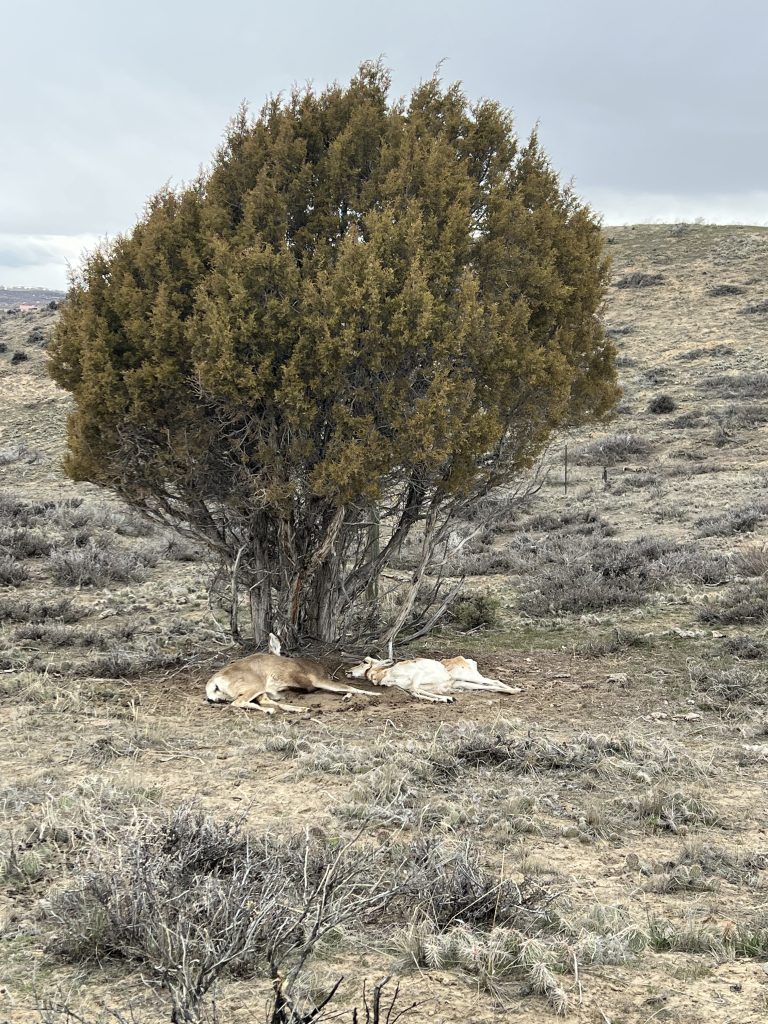
Bear hunters have faced a different challenge. Early drought looked like it might concentrate bears near water sources and help harvest, but September rains soaked the area and dispersed the bears more than anticipated.
“I feel like I’ve checked fewer bears this year than the last several years,” he said.
He added that overall demand for bear tags is steady but that harvest is still less than CPW desires. Many hunters carry a bear license as a secondary tag rather than a primary, and a short fall-only window limits harvest.
The region’s population of black bears has continued to climb in recent years, placing many areas far above CPW population objectives.
“We can pump as many licenses as we want into the system but it won’t always change our general overall bear harvest,” he said.
For those who are fortunate enough to harvest a bear, prompt and proper meat care is everything.
“Get it cooled off ASAP,” Lamb said.
He stressed the importance of prompt field dressing, which for bears involves removing the thick insulating hide, and getting meat on ice or to a processor.
“It’s a recipe for disaster if you don’t,” he said. “The same applies to all game species. It all comes down to post-harvest care.”
Looking ahead to the rifle seasons, Lamb expects “plenty of opportunity in terms of those two-and-a-half-year-old bulls.”
Still, more mature five-by-fives and sixes will be tougher to come by after two years of hunting and the lingering effects of winter die-off among older age classes.
Regarding the timing of this year’s elk rut, Lamb thinks a second peak is possible for hunters during the early rifle seasons. Rut activity, which signals the onset of the breeding season for elk, was strong at the start of muzzleloader but tapered off, possibly due to weather swings and moon phases that can nudge the rut’s timing and perceived intensity.
Regulatory reminders have been part of Lamb’s field checks this year as well. He said that the most common mistakes are basic, including carrying loaded firearms in vehicles.
In passenger vehicles, rifles and shotguns must be unloaded, though the gun does not have to be cased. On ATVs and side-by-sides, guns must be fully unloaded with no rounds in the magazine and they must be cased.
Modern technology has also been a new focus of enforcement, including cellular trail cameras and drones. Hunters cannot use a cell-connected trail camera to transmit images and then hunt the same day or the following day.
Lamb also pointed out that using drones or aircraft to locate wildlife for hunting is not allowed.
After two hard years, he said that the region’s reputation as a top tier hunting destination took a public hit after the die-off winter, especially among nonresidents.
“People were shell shocked thinking that we have no critters left in Craig after that winter,” he said. “That’s not the case. We’re rebounding and there’s definitely opportunity in our area still.”
Hunters now turning their attention to the rifle seasons can expect good opportunities, particularly for legal bulls and improving deer numbers. The first rifle season for deer and elk runs Oct. 15-19, followed by second season Oct. 25 to Nov. 2, third season Nov. 8-16 and fourth season Nov. 19-23.

Support Local Journalism

Support Local Journalism
Readers around Craig and Moffat County make the Craig Press’ work possible. Your financial contribution supports our efforts to deliver quality, locally relevant journalism.
Now more than ever, your support is critical to help us keep our community informed about the evolving coronavirus pandemic and the impact it is having locally. Every contribution, however large or small, will make a difference.
Each donation will be used exclusively for the development and creation of increased news coverage.




